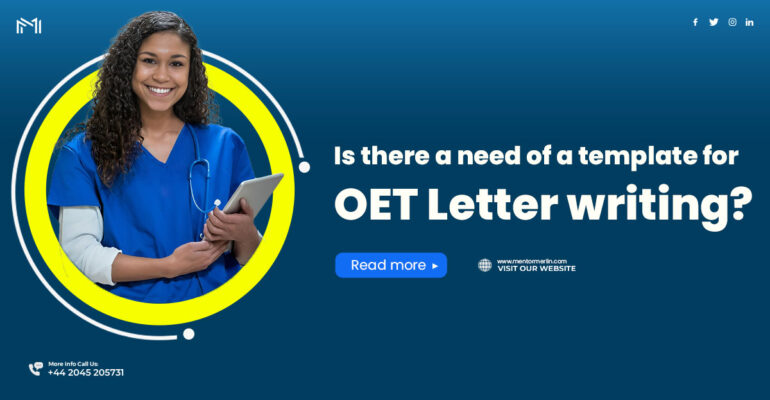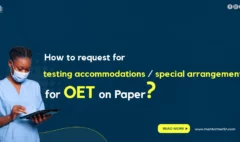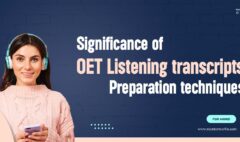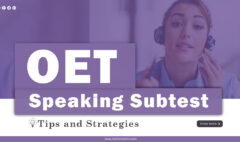Is there a need of a template for OET Letter writing?
June 12, 2023 2023-06-12 22:05Is there a need of a template for OET Letter writing?
Is there a need of a template for OET Letter writing?
In the world of healthcare communication, there is no one-size-fits-all template for writing letters in the Occupational English Test (OET). The formats can vary depending on the local context and practices of health professionals. However, regardless of the specific format used, there are key principles that should guide the writing process to ensure clarity and appropriateness for the task at hand.
One crucial aspect of writing medical letters is to organize information in a logical and structured manner. The content should follow a certain order to help the reader easily navigate and extract the necessary information without confusion or wasting valuable time. By adhering to a consistent structure, healthcare professionals can effectively convey their message and facilitate effective communication with colleagues, specialists, or other healthcare providers.
Typical Methods of Approach
Typically, medical letters begin with a concise introduction that sets the tone and purpose of the correspondence. Following the introduction, the writer should provide relevant patient details such as the description of the patient’s symptoms, the timeline of their condition, any relevant diagnostic test results, medical history, and any other pertinent background information. Also, it is vital to include a summary of the medical management provided thus far. Finally, a medical letter should conclude with a clear and specific request or purpose.
Basic Structure

Mentor Merlin’s Method of Letter Writing
There is no particular framework for arranging the paragraphs of the letters. A basic format with an introduction, body, and conclusion is preferred.
Here, a format is not what we propose but rather a method, as it can be immensely helpful in organizing and presenting the content of the letter. Moreover, this method would be useful to filter the information out of a case note.
Below is a suggested method of separation you could use to easily understand and write the letter.

Introduction Paragraph
The introduction paragraph is one of the most important parts of any letter. It gives an insight into the letter we are going to write and therefore needs to be correctly written.
Important points to be included in the introduction paragraph are:
- Full name of the patient
- Diagnosis/treatment
- Purpose of Letter
- Discharge date (if any)
Body Paragraph
The body paragraph is where the elaborated details of the patient are included, such as the patient’s symptoms, the timeline of their condition, any relevant diagnostic test results, medical history, and any other pertinent background information.
There are three ways of arranging the body paragraph:
- Thematic Arrangement – To structure the paragraph based on the topic’s relevance
- Chronological Arrangement – To structure the paragraph in accordance with the date of events
- Urgent Case Arrangement – Special case structure used in emergency referrals
Conclusion Paragraph
While concluding the letter, there are two things you have to include:
- Discharge Plan – Explaining the further needs of the patient in a formal request tone
- Closing statement – Ending the letter by assuring the recipient to reach out for any further needs
Closing
You can close your letter with complimentary closings or valedictions along with your name and designation.
The most commonly used valedictions include “Yours sincerely” and “Yours faithfully.”
To gain a comprehensive understanding of the intricacies involved in finding and filtering information from case notes and organizing them effectively, subscribe to our exclusive course.
Format of a complete letter

While there may be flexibility in the overall format of medical letters in OET, maintaining a consistent and logical structure helps streamline communication and ensures that vital information is readily accessible. Whether it’s a referral, an update, or a consultation, the effectiveness of medical letters lies in their ability to convey information succinctly and coherently, enabling efficient collaboration and optimal patient care.
Unlock the key techniques and strategies that will empower you to navigate through the wealth of information with precision and enhance your expertise in this crucial aspect of your profession. Subscribe today and join our expert OET Course.












